My Big Brazillian Adventure
/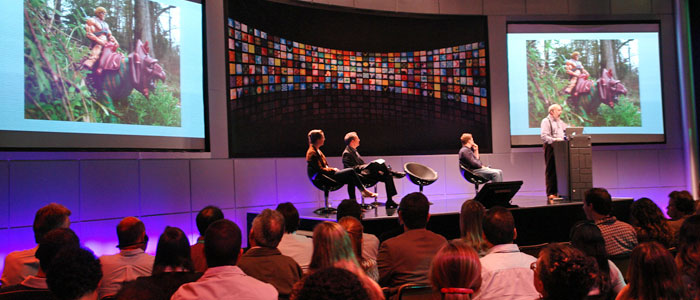 Of the foreign language editions of Convergence Culture, probably the best selling one was the version published in Portuguese and distributed primarily in Brazil. Thanks to the support of Mauricio Mota and the Alchemists, a transmedia company which works in Rio and Los Angeles, my book has stimulated enormous interest in that country, with companies such as Globo and Petrobras buying hundreds of copies to give to their employees and clients as Brazil seeks to better understand the digital age at a moment of deep cultural and technological transition.
Of the foreign language editions of Convergence Culture, probably the best selling one was the version published in Portuguese and distributed primarily in Brazil. Thanks to the support of Mauricio Mota and the Alchemists, a transmedia company which works in Rio and Los Angeles, my book has stimulated enormous interest in that country, with companies such as Globo and Petrobras buying hundreds of copies to give to their employees and clients as Brazil seeks to better understand the digital age at a moment of deep cultural and technological transition.
Why Brazil? Two primary reasons: First, Brazil is at the center of the so-called BRIC nations (Brazil, Russia, India, and China), countries which economists believe are going to be dominant economic (and I suspect, cultural) powers in the 21st century. These are countries on the rise, countries which have embraced new media and are surfing it to gain greater influence over the planet. Much as China has gained greater visibility in recent years through the Olympics and the current Shanghai Expo, Brazil is positioned to gain wider attention by hosting the Olympics and the World Cup in the next few years. It is a country with a strong digital infrastructure and thriving creative industries.
Second, unlike the United States, Brazil has held onto strong folk and participatory traditions, despite the rise of modern mass media. Seymour Papert famously used the Samba Schools as his illustration of how informal and community based learning works and that example has stuck in my head from my early days at MIT:
If you dropped in at a Samba School on a typical Saturday night you would take it for a dance hall. The dominant activity is dancing, with the expected accompaniment of drinking, talking and observing the scene. From time to time the dancing stops and someone sings a lyric or makes a short speech over a very loud P.A. system. You would soon begin to realize that there is more continuity, social cohesion and long term common purpose than amongst transient or even regular dancers in a typical American dance hall. The point is that the Samba School has another purpose then the fun of the particular evening. This purpose is related to the famous Carnival which will dominate Rio at Mardi Gras and at which each Samba School will take on a segment of the more than twenty-four hour long procession of street dancing. This segment will be an elaborately prepared, decorated and choreographed presentation of a story, typically a folk tale rewritten with lyrics, music and dance newly composed during the previous year. So we see the complex functions of the Samba School. While people have come to dance, they are simultaneously participating in the choice, and elaboration of the theme of the next carnival; the lyrics sung between the dances are proposals for inclusion; the dancing is also the audition, at once competitive and supportive, for the leading roles, the rehearsal and the training school for dancers at all levels of ability.
From this point of view a very remarkable aspect of the Samba School is the presence in one place of people engaged in a common activity - dancing - at all levels of competence from beginning children who seem scarcely yet able to talk, to superstars who would not be put to shame by the soloists of dance companies anywhere in the world. The fact of being together would in itself be "educational" for the beginners; but what is more deeply so is the degree of interaction between dancers of different levels of competence. From time to time a dancer will gather a group of others to work together on some technical aspect; the life of the group might be ten minutes or half an hour, its average age five or twenty five, its mode of operation might be highly didactic or more simply a chance to interact with a more advanced dancer. The details are not important: what counts is the weaving of education into the larger, richer cultural-social experience of the Samba School.
My Student Ana Domb Krauskopf recently wrote a fascinating white paper for the Convergence Culture Consortium on Techno Brega, a form of popular music in regional Brazil, which operates under a radically different model of production and distribution which is being studied by many in the Free Culture movement.
If you accept my premise that digital participatory culture is what happens when we apply folk culture logic to the content of mass culture in an era where we have expanded capacities for circulation, then it makes sense that digital culture is going to take a very different shape in Brazil than in the United States. Given this history, my work seems especially resonant with Brazilian readers and I am feeling a strong tug to spend more time in that country.
I spent the last week and a half of May in Brazil, speaking with several key players there in the efforts to make the country a key digital player, including Petrobras, the leading oil company, and Globo, a key media producer and distributor. While I was there, I was interviewed by half a dozen or so of the leading print and television journalists.
The key event during my stay in Rio was a talk to creative workers inside Globo's Project, their primary production facility on the outskirts of the city, at the foot of a truly spectacular cluster of mountains and on the edge of the rain forest. I was consistently impressed in Rio by the ways that the natural world was fully integrated into the life of the city.
I was able to go to the top of Sugarloaf Mountain and look down on the city. Scattered throughout Rio are massive outcroppings of exposed rock -- to call them mountains, though they are mountain sized, does not really capture the oddness of these protrusions. They are much closer to Stone Mountain in my native Atlanta (of course without the carvings of Confederate generals!) than anything else I had ever seen. The city is wrapped in and around these mountains. In some cases, the Favela run up the sides of mountains. The more desirable land is at their foot. They are contained by the beaches and oceans that surround much of the city. And threaded through these pockets of development remain large forests. The effect is close to the technological utopian conception of the city as an integrated environment where nature and technology can co-exist. It is hard to go far in Rio without confronting the natural world and the companies where I spoke were very overt about their commitments to Green policies.
The event at Globo was simply spectacular. The production people had turned a soundstage into what can only be described as a set. Not only had they taken a key motif from the cover of my book and blown it up to the size of a wall, adding in massive television screens on either side, but they had taken other elements from the book's design and decorated the entire hall. It was packed with hundreds of people who wanted to learn more about convergence and transmedia. And the event was being webcast and live-blogged so the words were being transmitted to many who could not be physically present. I presented an opening talk on transmedia which drew upon my recent He-Man essay and my 7 Principles of Transmedia Storytelling paper, both of which have already been shared on my blog, and ended with some thoughts about future challenges confronting transmedia producers which I hope to share with my readers soon.
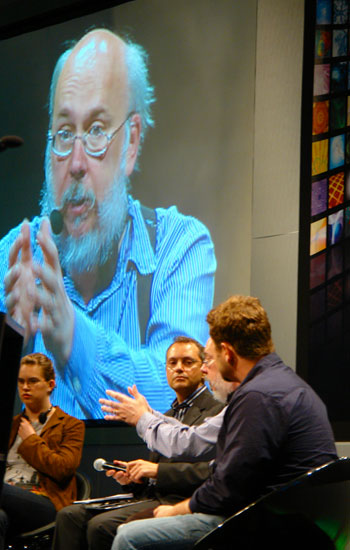
Afterwords, I was joined on stage by Mark Warshaw, who had developed transmedia for Heroes and Smallville and now is a key partner in The Alchemists, and Florish Klink, a recently minted graduate of MIT's Comparative Media Studies Program who is becoming the group's Chief Participation Officer (their expert on fan relations). And we were hit with all kinds of thoughtful questions from the audience, questions which showed just how carefully they had listened and absorbed the insights from my work and how much they were thinking through the future of media in their country. In some ways, they are a step behind developments in North America -- for example, the DVR has not yet come to Rio -- but they are learning the lessons of the early adapter countries and will be ready as they reinvent their media system for the 21st century.
Afterwards, we went on a tour of the production facilities. In many ways, they resemble the classic film studios of the Golden Era of Hollywood, except that they are managed by digital dasebases. So, there are large backlots and vast sound stages. We were shown, for example, a scale reconstruction of a Sao Paolo shopping mall which was used as the setting for a youth-oriented telanovela.
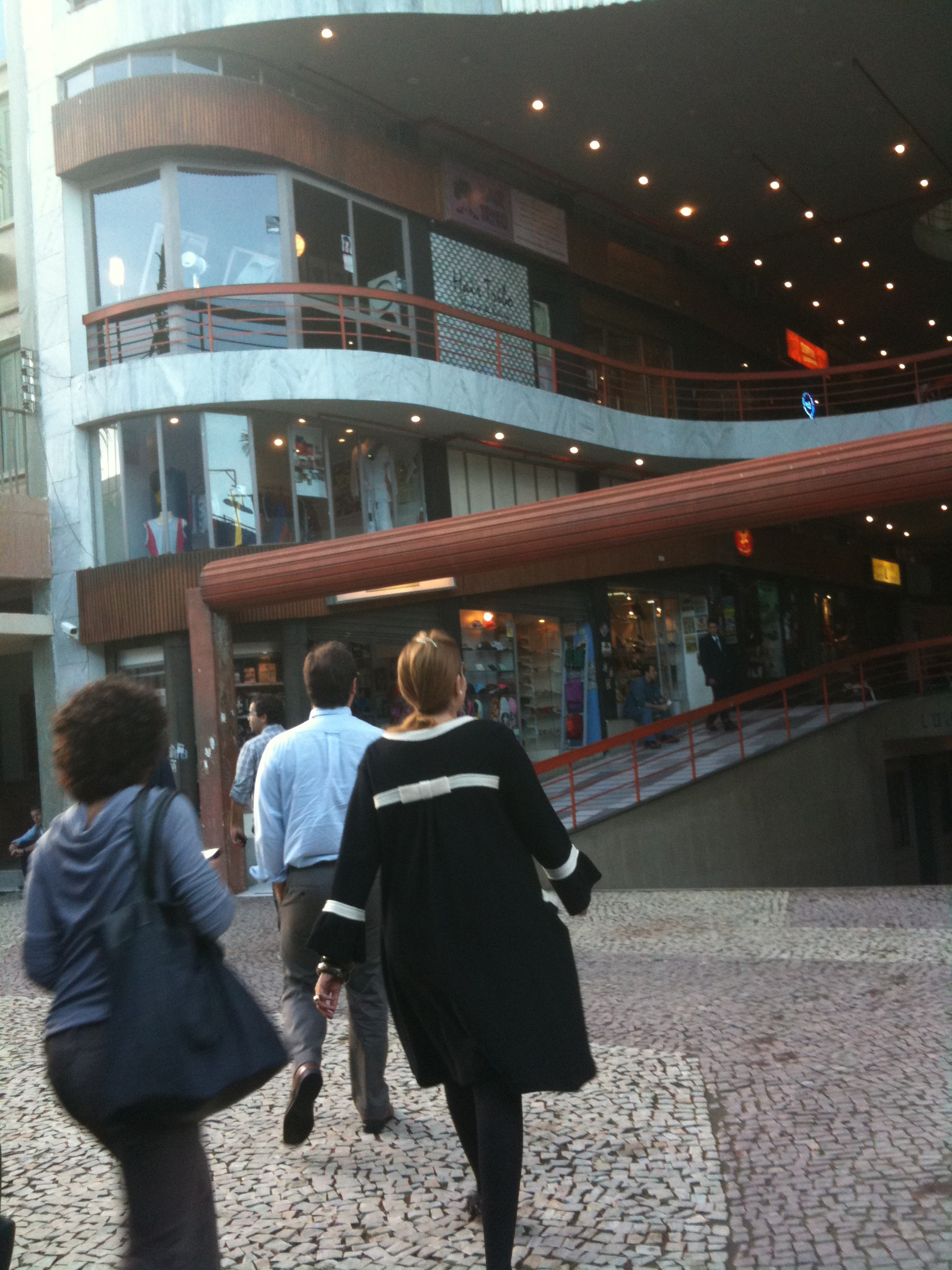
And we were driven through a lovingly recreated neighborhood from the south of Italy which is the setting of another of their popular series. I am posing here with Mauricio Mota and Flourish Klink from The Alchemists.
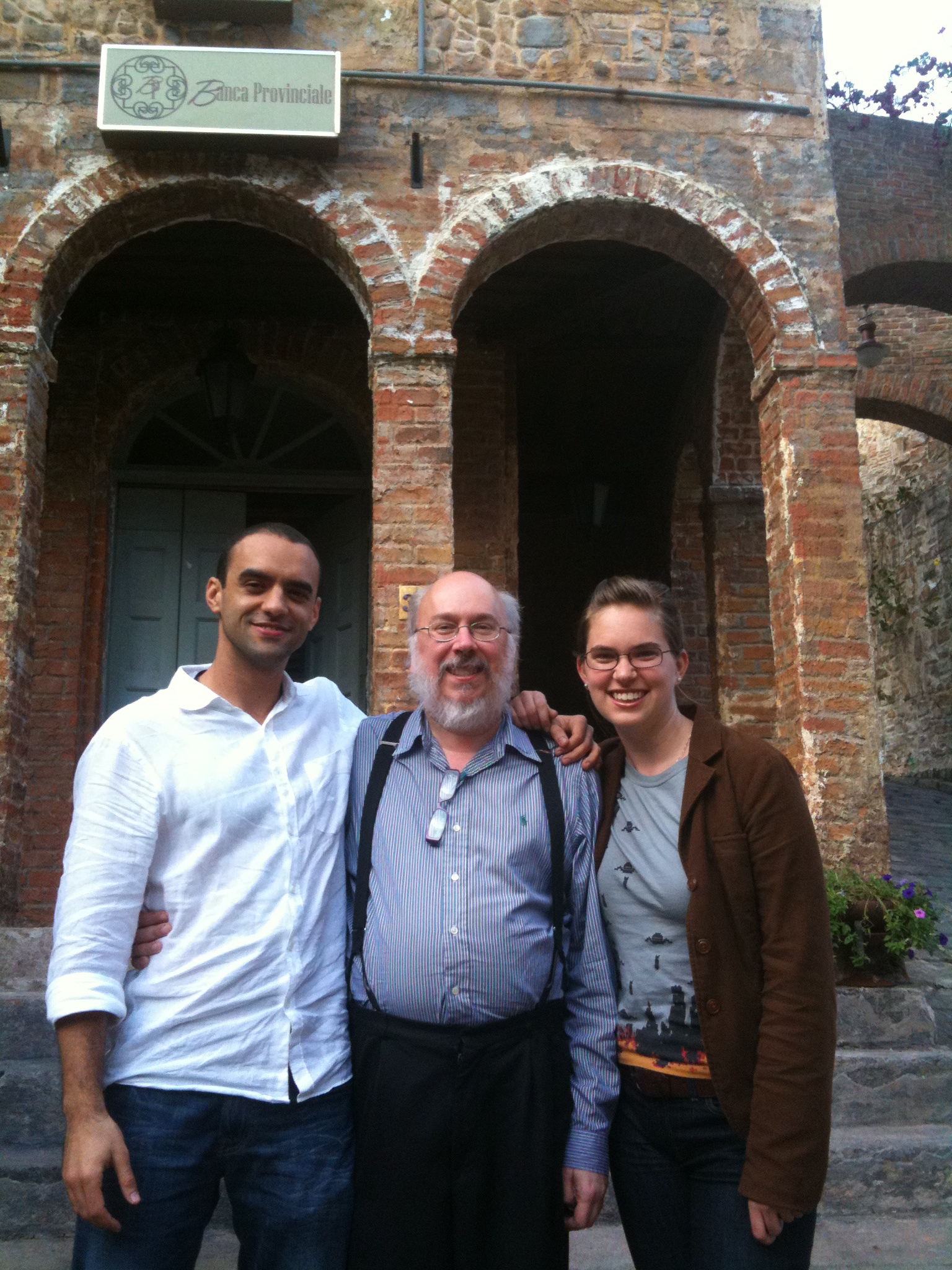
We toured a vast warehouse holding props which were in storage from previous productions and could be called up from the database when needed for new series and another warehouse where costumes were stored, organized by the decade where the stories were set. Alongside the storehouses, there was a factory of workers sewing new costumes to be used, often in just a few hours, on one or another of the projects they were filming and there were construction crews that could build and breakdown sets on a daily basis.
We walked through the soundstages and saw Passione, a telanovela, being shot. We met briefly the young and very attractive stars Mariana Ximenes and Reynaldo Gianechinni, who have been called the Jennifer Aniston and Brad Pitt of Brazil. And we were able to watch them shoot a scene from an upcoming episode, standing in the booth with the director as they swapped between five cameras which were filming the scene. It was one of fifteen scenes for the series that were scheduled to be shot that day amongst ten or so settings in the studio devoted to Passione's production. The scenes were shot out of sequence 4 or 5 episodes at a time to allow them to complete their needs of a setting, break it down, and make way for the next setting, all in the course of a 1-2 day period of time. The folks with us who worked in Hollywood were astonished at both the attention to detail in the production design but also the efficiency of the operation over all.
(Next Time: Down Argentina Way)


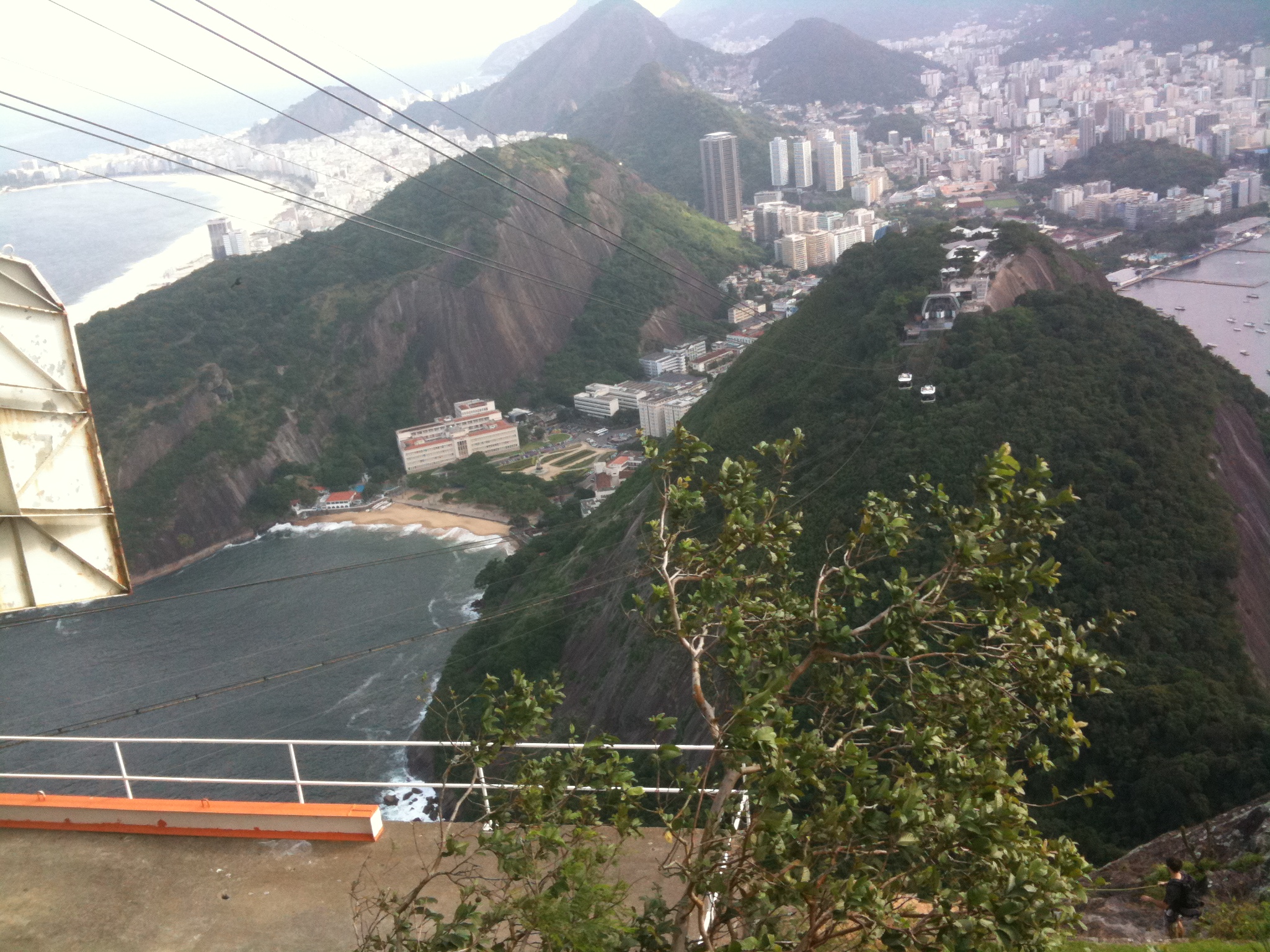
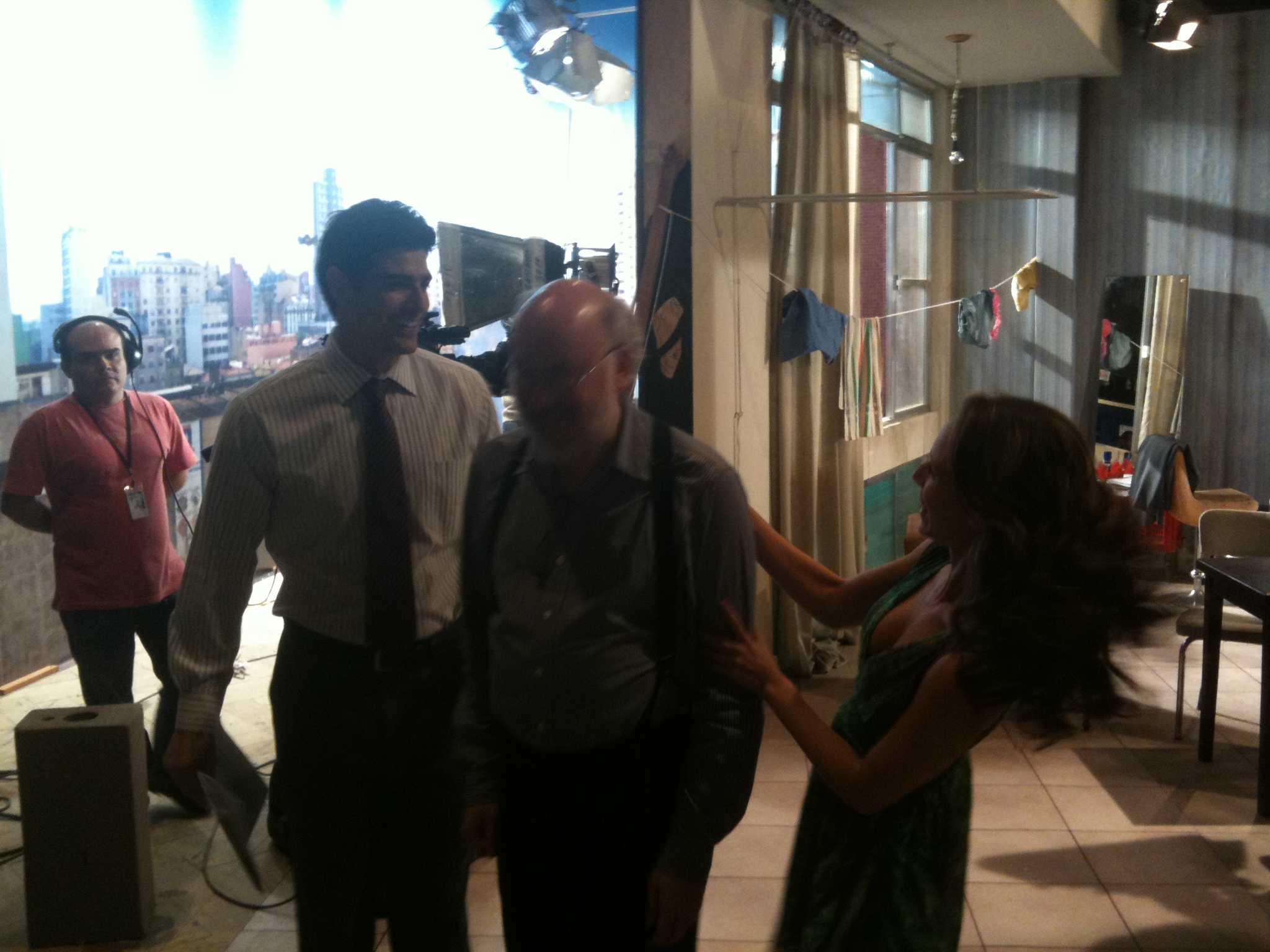
![Reblog this post [with Zemanta]](http://img.zemanta.com/reblog_e.png?x-id=f1b3a7b4-91f9-4e30-91f5-e6d92df9437b)